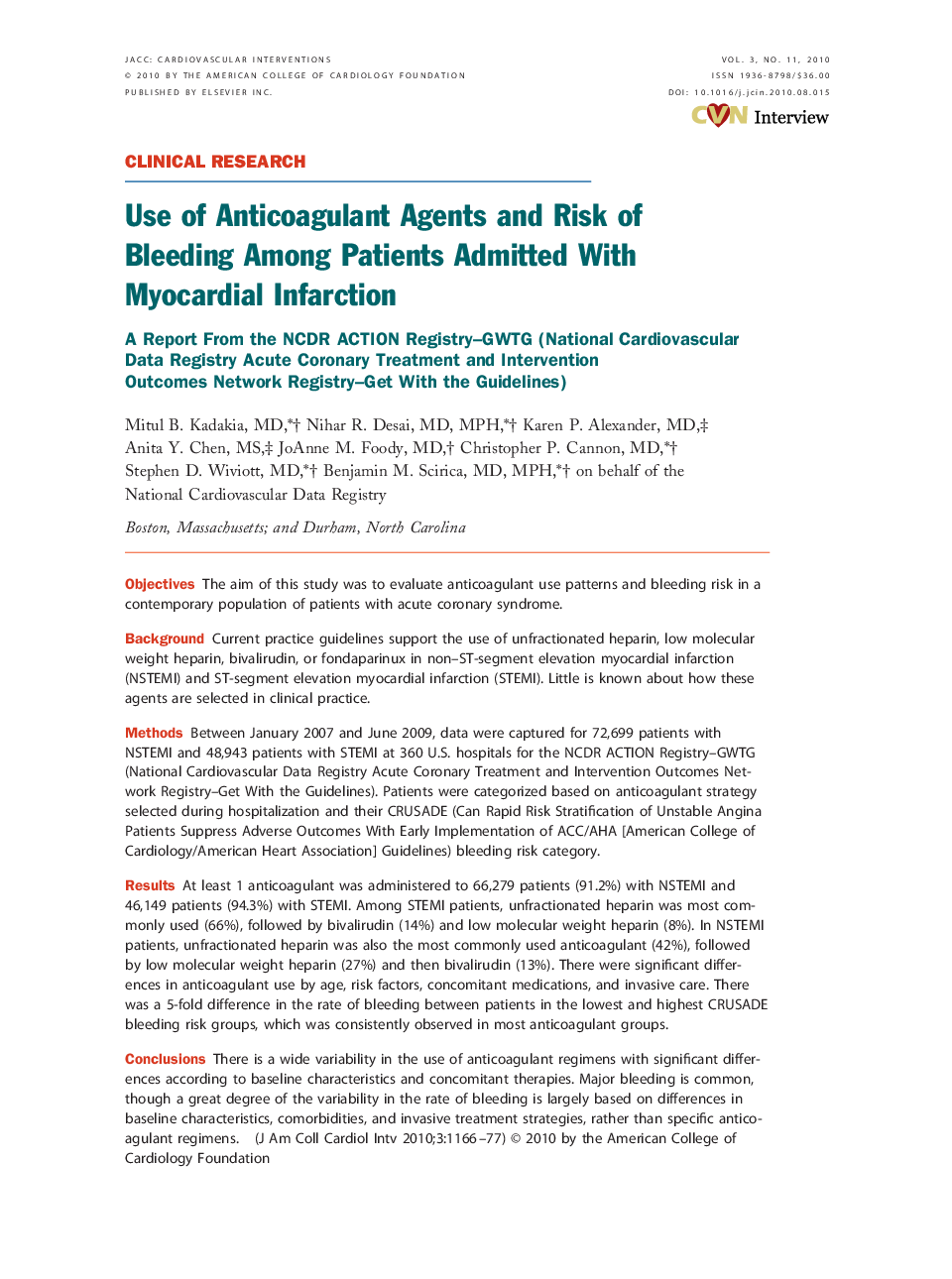| Article ID | Journal | Published Year | Pages | File Type |
|---|---|---|---|---|
| 2941660 | JACC: Cardiovascular Interventions | 2010 | 12 Pages |
ObjectivesThe aim of this study was to evaluate anticoagulant use patterns and bleeding risk in a contemporary population of patients with acute coronary syndrome.BackgroundCurrent practice guidelines support the use of unfractionated heparin, low molecular weight heparin, bivalirudin, or fondaparinux in non–ST-segment elevation myocardial infarction (NSTEMI) and ST-segment elevation myocardial infarction (STEMI). Little is known about how these agents are selected in clinical practice.MethodsBetween January 2007 and June 2009, data were captured for 72,699 patients with NSTEMI and 48,943 patients with STEMI at 360 U.S. hospitals for the NCDR ACTION Registry–GWTG (National Cardiovascular Data Registry Acute Coronary Treatment and Intervention Outcomes Network Registry–Get With the Guidelines). Patients were categorized based on anticoagulant strategy selected during hospitalization and their CRUSADE (Can Rapid Risk Stratification of Unstable Angina Patients Suppress Adverse Outcomes With Early Implementation of ACC/AHA [American College of Cardiology/American Heart Association] Guidelines) bleeding risk category.ResultsAt least 1 anticoagulant was administered to 66,279 patients (91.2%) with NSTEMI and 46,149 patients (94.3%) with STEMI. Among STEMI patients, unfractionated heparin was most commonly used (66%), followed by bivalirudin (14%) and low molecular weight heparin (8%). In NSTEMI patients, unfractionated heparin was also the most commonly used anticoagulant (42%), followed by low molecular weight heparin (27%) and then bivalirudin (13%). There were significant differences in anticoagulant use by age, risk factors, concomitant medications, and invasive care. There was a 5-fold difference in the rate of bleeding between patients in the lowest and highest CRUSADE bleeding risk groups, which was consistently observed in most anticoagulant groups.ConclusionsThere is a wide variability in the use of anticoagulant regimens with significant differences according to baseline characteristics and concomitant therapies. Major bleeding is common, though a great degree of the variability in the rate of bleeding is largely based on differences in baseline characteristics, comorbidities, and invasive treatment strategies, rather than specific anticoagulant regimens.
